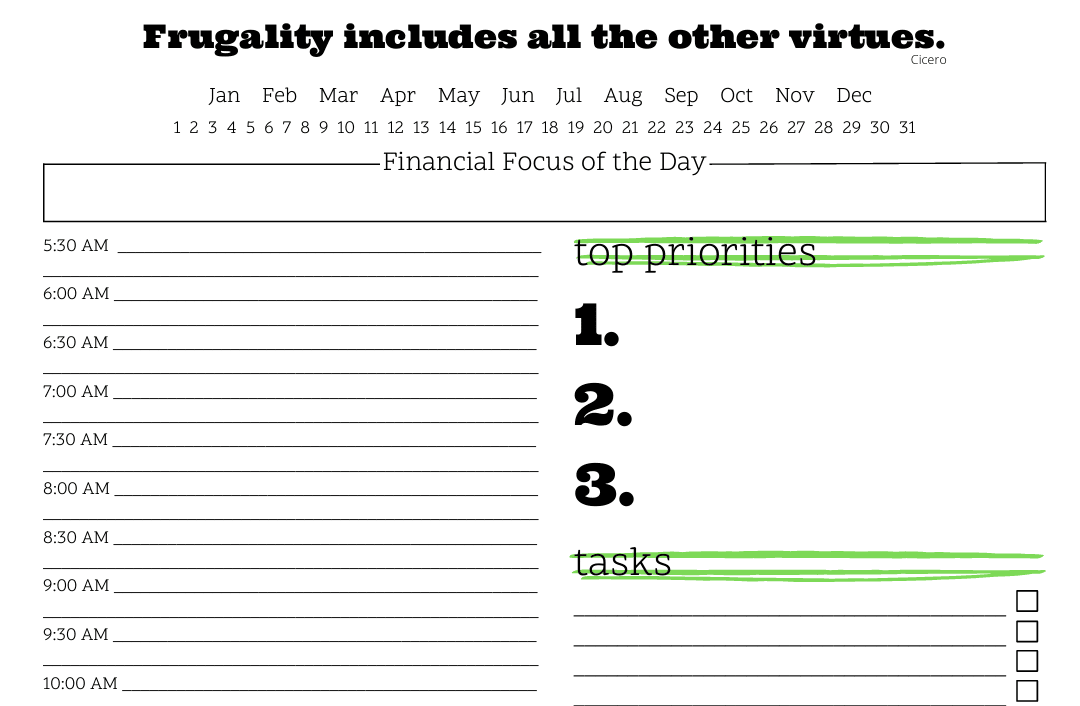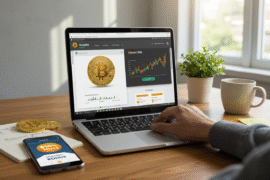This article may contain references to products or services from one or more of our advertisers or partners. We may receive compensation when you click on links to those products or services. Nonetheless, our opinions are our own.
The information presented in this article is accurate to the best of our knowledge at the time of publication. However, information is subject to change, and no guarantees are made about the continued accuracy or completeness of this content after its publication date.
Navigating the vibrant world of Bitcoin trading can be as thrilling as it is rewarding. I’ve found that developing a solid daily trading strategy not only boosts confidence but also enhances profitability in this fast-paced market. Each day offers new opportunities to capitalise on the volatility that defines cryptocurrencies, especially Bitcoin.
From my experience, understanding market trends and setting clear, achievable goals each day is key. This approach has allowed me to make the most of my investments while minimising risks. Let’s dive into how you can craft a daily trading strategy that keeps you one step ahead in the ever-evolving crypto landscape.
Key Takeaways
- Develop a Clear Strategy: Establishing a daily trading strategy, including clear goals and risk management measures, is essential for capitalising on Bitcoin’s volatility effectively.
- Choose the Right Tools: Utilising reliable trading platforms and tools like charting software and automated bots can significantly enhance trading efficiency and accuracy.
- Understand Market Indicators: Knowledge of market indicators such as volume changes, price trends, and RSI levels is crucial for making informed trading decisions quickly.
- Diverse Trading Techniques: Employing various trading techniques—day trading, swing trading, and scalping—can cater to different investment horizons and risk appetites.
- Risk Management: Implementing strict stop-loss orders and diversifying across multiple cryptocurrencies are vital strategies to mitigate risks and protect investments.
- Continuous Learning: Keeping a detailed trading journal and learning from past trades are imperative for refining strategies and achieving consistent profitability in the dynamic Bitcoin market.
Understanding the Basics of Bitcoin Trading
What Is Bitcoin?
Bitcoin, launched in 2009, is the pioneer cryptocurrency. It operates on a decentralized network, free from central bank control. Users worldwide can exchange Bitcoin for goods, services, or other currencies.
How Does Bitcoin Trading Work?
In my experience, trading Bitcoin involves capitalizing on its price changes within a day. I buy low and aim to sell high during these fluctuations. This approach requires constant market analysis but can be highly rewarding.
Setting Up for Successful Bitcoin Daily Trading
In my journey with Bitcoin trading, I’ve discovered that a robust setup is key to success.
Choosing the Right Trading Platform
I always opt for platforms known for their reliability and user-friendly interfaces. Security features and low transaction fees are top priorities for me. It’s crucial to choose a platform that aligns with my trading style and needs.
Understanding Market Indicators
Grasping market indicators has significantly boosted my trading outcomes. I focus on volume changes, price trends, and RSI levels. These indicators help me make informed decisions quickly, enhancing my ability to profit from daily Bitcoin volatility.
Key Strategies for Bitcoin Daily Trading
In my experience, mastering specific strategies enhances your trading outcomes significantly. Here’s how I approach each one:
Day Trading
Day trading suits my need for quick results. I enter and exit trades within the same day, capitalising on small price movements. My strategy hinges on robust technical analysis using indicators like chart patterns and volumes. Risk management is key; I never risk more than 2% of my capital per trade. This disciplined approach helps me stay profitable.
Swing Trading
Swing trading aligns with my preference for slightly longer investment horizons. This method involves holding positions for several days to capture market momentum. It requires a good grasp of both fundamental and technical analysis to forecast potential price moves effectively. Patience is crucial here, as is a strict adherence to stop-loss rules to protect gains.
Scalping
Scalping is intense but rewarding when done right. I make numerous trades throughout the day, targeting very small price changes. Speed is critical in scalping, so I use automated systems to execute trades swiftly and efficiently. Maintaining focus and managing stress are essential as the fast-paced nature of scalping can be challenging.
Tools and Software for Efficient Trading
To excel in Bitcoin trading, I rely heavily on specific tools and software that enhance my decision-making speed and accuracy.
Charting Tools
Charting tools are indispensable in my daily trading. They provide real-time data visualisations that help me spot trends quickly. I use these tools to draw trend lines and analyse historical price movements, which are critical for predicting future market behaviour. My favourites include platforms that offer a variety of technical indicators like moving averages and MACD.
Automated Trading Bots
Automated trading bots have revolutionised how I trade Bitcoin. These bots execute trades based on pre-set parameters, allowing me to capitalise on opportunities even when I’m not actively monitoring the markets. They’re particularly useful for implementing the scalping strategy effectively, as they can make rapid trades at volume, which is something I find invaluable during volatile market conditions.
Risk Management Techniques
In my journey with Bitcoin daily trading, I’ve learned that managing risks is as crucial as spotting opportunities. Here’s how I handle the essentials of risk management.
Setting Stop-Loss and Take-Profit Limits
I always set stop-loss orders to cap potential losses. It’s a safety net that automatically closes a trade if it hits a certain price point. Similarly, I set take-profit limits to secure profits when prices reach my target levels. This strategy ensures I don’t miss out on gains or suffer steep losses.
Diversifying Your Portfolio
To spread risk, I diversify my investment across various cryptocurrencies, not just Bitcoin. By allocating funds into different assets, such as Ethereum, Ripple, and Litecoin, I reduce the impact of a sharp decline in any single cryptocurrency on my overall portfolio’s value. This approach helps stabilize returns over time.
Analysing Past Trade Performances
In my journey with Bitcoin trading, scrutinising past trades has been pivotal for honing my strategies.
Importance of Keeping a Trading Journal
I maintain a meticulous trading journal. It tracks all my trade details: entry and exit points, reasons for trades, and their outcomes. This record-keeping clarifies patterns and pinpoints improvement areas, enhancing my decision-making process over time.
Learning from Trading Mistakes
Every trading mistake offers a learning opportunity. I analyse these errors to understand what went wrong and adjust accordingly. This reflective practice prevents future missteps and strengthens my overall trading strategy, leading to more consistent gains in the volatile Bitcoin market.
Tips from Experienced Traders
In my journey with Bitcoin trading, I’ve gathered invaluable tips from seasoned traders that significantly boosted my success rate.
Best Times to Trade Bitcoin
I find the best times to trade Bitcoin are during high liquidity hours. Typically, this is when US and European markets overlap, around 2 PM to 6 PM GMT. High market activity offers more opportunities for profitable trades.
Handling Volatility
Handling Bitcoin’s volatility requires a calm approach. I focus on setting clear entry and exit points based on technical analysis. This strategy helps me capitalize on price swings while managing potential risks effectively.
Conclusion
Arming yourself with a robust Bitcoin trading strategy is essential for navigating the cryptocurrency market’s highs and lows. By integrating solid risk management practices and utilising advanced tools like charting software and automated bots you’ll enhance your ability to make informed decisions swiftly. Remember it’s not just about the profits but also about safeguarding your investments from potential downturns.
Staying updated with market trends and continuously refining your approach based on past performance can significantly improve your trading outcomes. Whether you’re day trading swing trading or scalping the discipline of adhering to a well-tested strategy combined with real-time analysis will be key to your success.
Embrace the learning curve that comes with Bitcoin trading. Each trade provides valuable insights into market behaviour helping you to hone your strategies further. With persistence and a keen eye on both opportunities and risks you can achieve consistent profitability in this exhilarating yet challenging field.

Reviewed and edited by Albert Fang.
See a typo or want to suggest an edit/revision to the content? Use the contact us form to provide feedback.
At FangWallet, we value editorial integrity and open collaboration in curating quality content for readers to enjoy. Much appreciated for the assist.
Did you like our article and find it insightful? We encourage sharing the article link with family and friends to benefit as well - better yet, sharing on social media. Thank you for the support! 🍉
Article Title: Mastering Bitcoin Daily Trading Strategy for Maximum Profit
https://fangwallet.com/2024/12/16/mastering-bitcoin-daily-trading-strategy-for-maximum-profit/The FangWallet Promise
FangWallet is an editorially independent resource - founded on breaking down challenging financial concepts for anyone to understand since 2014. While we adhere to editorial integrity, note that this post may contain references to products from our partners.
The FangWallet promise is always to have your best interest in mind and be transparent and honest about the financial picture.
Become an Insider

Subscribe to get a free daily budget planner printable to help get your money on track!
Make passive money the right way. No spam.
Editorial Disclaimer: The editorial content on this page is not provided by any of the companies mentioned. The opinions expressed here are the author's alone.
The content of this website is for informational purposes only and does not represent investment advice, or an offer or solicitation to buy or sell any security, investment, or product. Investors are encouraged to do their own due diligence, and, if necessary, consult professional advising before making any investment decisions. Investing involves a high degree of risk, and financial losses may occur including the potential loss of principal.
Source Citation References:
+ Inspo










































